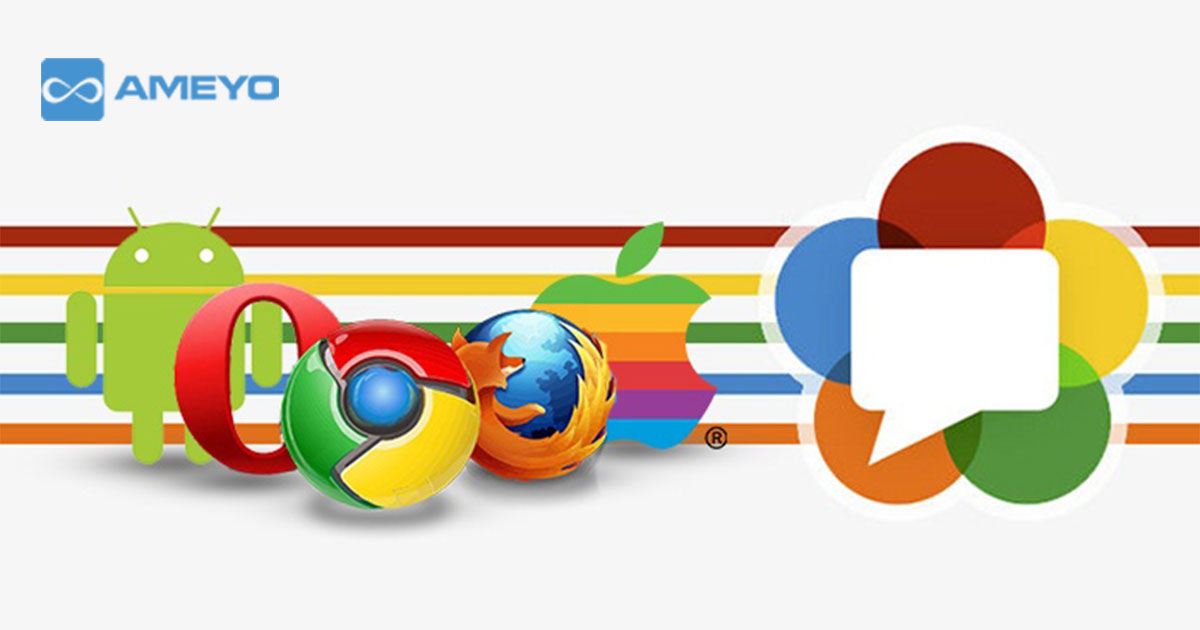The modern day business is all about superior engagement with customers and enriching customer experience. The world has traversed a mammoth expanse to bring customers closer to brands – from a time where customers had no option but to consume whatever they were offered, to the present day where customers have taken centre stage of business strategies.
The incessant pursuit to bridge the gap between customers and brands has led organizations to develop almost endless tools, features and processes. However, since last year one technology surely stands out as a shimmering light to upgrade customer experience, namely – WebRTC (Web Real Time Communication).
What necessarily is WebRTC?
For the uninitiated, Web Real Time Communication is an API (Application Programming Interface), which supports browser-to-browser application for voice calling, video chat, and file sharing – all without the use of internal or external plugins.
Read the aforementioned definition again. Do you see where we are getting at? Yes, a world where customer service is no longer restricted to the phone, and a world where great customer experience is the word of the day.
In the contact center business, it is a part of the ‘Omnichannel’ experience. Therefore, a customer interaction may start on social media, may get escalated to chat, move on to voice and video calling, and finally can end up with screen sharing. All of these tasks can be carried out pretty effectively and effortlessly with the help of WebRTC.
Moreover, it is supported in most browsers like Google Chrome, Mozilla Firefox, Opera, iOS, and Blackberry 10. So, it makes things painless as customers can choose to communicate on both wired and wireless devices.
How can WebRTC be used efficiently in the Contact Center Business?
Upon inception, it was largely used in video conferencing and click-to-dial widgets for websites and mobile applications. The click-to-call widget aimed to lessen the use of phone based problem resolution by utilising the website or app, where customers are already present at.
WebRTC has also been employed by call center reps to receive incoming calls from customers. This means that the call gets routed to the rep’s web browser, once customers dials in routed through the company’s IVR system. From the IVR, the call gets transferred to the rep’s web browser, instead of a phone or the software on the rep’s system. This trend is likely to continue and be commonplace in 2016. Therefore, reps are able to work from anywhere as WebRTC means almost no software to manage and maintain.
Perhaps the greatest advantage of Web Real Time Communication is that it is an open-source technology, and can be integrated with iOS and Android, within specific applications. This has allowed it to become popular with mobile apps. Already, several businesses are including chat and messaging in their apps, which translate into an increased acceptance of Web Real Time Communication.
Implementing this new technology in contemporary businesses also opens the door of a world full of new analytics that can be leveraged to for increased customer retention and acquiring new ones. Companies have already started to use all the available information collected with the help of WebRTC, to directly target high value prospects based on real time information, and also offer customized offers.
What to Expect Now?
With Omnichannel based contact centers gaining importance, WebRTC will surely gather considerable pace. Customers are increasingly using multiple mode of communication to express their opinion, feedback and sentiments. Therefore, it makes sense to implement this new technology at the earliest. It has the power to transform a normal phone call at the contact center to a completely new level for businesses to interact better with customers.
Also, the world is moving towards a mobile-first approach, where the mobile/smartphone will soon be the primary mode of communication for customers. Integrating Web Real Time Communication in your business will unquestionably give your brand a much-needed boost to make mobile-first and app-only approach a reality.

